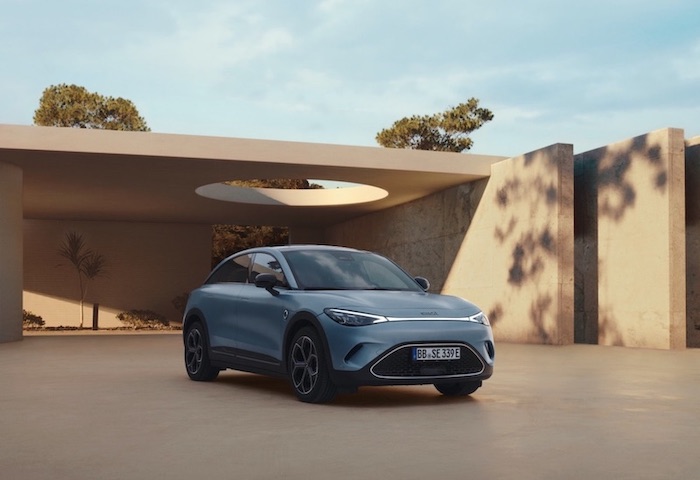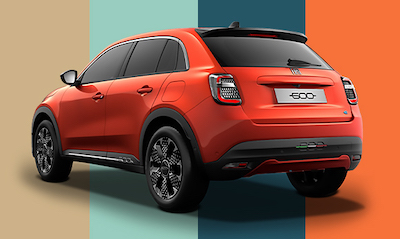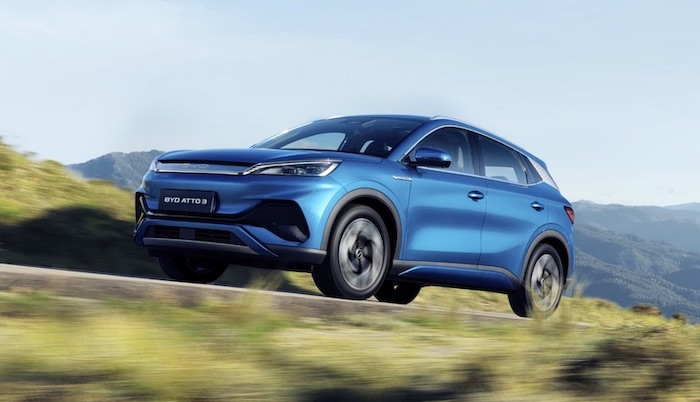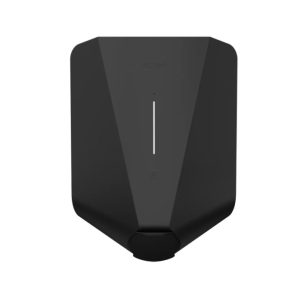Overview
In June 2020, Smart Europe GmbH was founded, as a wholly owned subsidiary of Smart Automobile Co. Ltd. The company is a joint venture between the German automotive manufacturer Mercedes-Benz AG and Geely Automobile Co,, Ltd, the privately-owned Chinese automotive manufacturer.
The vision of the joint venture is to “position Smart as a leading provider of intelligent electric vehicles in the premium segment’. The Smart Europe based team is responsible for all sales, marketing and after-sales activities. The Smart portfolio of battery-electric vehicles (BEVs) include:
- All-electric Smart #1
- All-electric Smart #3
- Smart EQ Fortwo coupe
- Smart EQ Fortwo Cabrio
- Smart EQ Forfour
Electric Cars: The Basics
For those of you new to zero-emission electric driving, we recommend a read of the following articles:
Sign up to the e-zoomed Electric Living newsletter
The All-Electric Smart #3 SUV Coupé
The newest entrant to the Smart premium electric mobility portfolio, the all-electric Smart #3 made its debut at the Auto Shanghai in April 2023. It is the second all-electric SUV from the OEM after the Smart #1 SUV. Smart continues with the ‘#’ naming system, with the Smart #3 (pronounced as ‘hashtag Three’).
The Smart #3 and Smart #1 have much in common, given that both electric vehicles (EVs) share the same EV dedicated platform: Geely’s all-electric platform called the Sustainable Experience Architecture (SEA-2). The all-electric Volvo EX30 also uses the same EV dedicated platform. SEA, the world’s first open-source electric vehicle architecture was launched in September 2020. The platform can accommodate A-Segment through to D and E segment vehicles.
Like the Smart# 1 electric car, the Smart#3 EV also caters for the needs of the city and suburban drivers, albeit, with a sportier and more aggressive exterior coupé styling. Apart from increasing the appeal of the e-car, the coupé silhouette also improves the aerodynamics of the EV. The #3 has a 0.27 Cd drag coefficient. By way of comparison, the very sleek, all-electric Hyundai IONIQ 6 saloon has an ultra-low drag coefficient 0.21 Cd. The #3 also features a spoiler to further reduce the drag.
The manufacturer suggests that one of the key differences in the positioning of these two Smart EVs, is that the #1 SUV is more ‘family-friendly’, while the #3 SUV coupé is targeting buyers keen on a more ‘dynamic avant-garde performance’. Despite the difference in the roofline, there remains much in common in the design language between the #1 and #3.
The Smart#3 is available in two EV battery sizes (49 kWh/ 66 kWh). For the 66 kWh lithium-nickel cobalt manganese EV battery, the manufacturer claims an electric range up to 283 miles (WLTP) on a full battery charge. Interestingly, not significantly different to Smart#1 electric range (273 miles), despite the more sleeker coupé styling. Adjusting for real-world driving conditions, expect a zero-tailpipe emission e-range up to 240 miles for the rear-wheel drive (RWD) #3. The claimed electric range for the all-wheel drive (AWD) #3 BARBUS is 258 miles (WLTP). Real-world range will be closer to 220 miles.
For the entry-level 49 kWh (#3 Pro variant), the claimed EV range is up to 202 miles. Expect the real-world e-range to be closer to 170 miles. To further increase the efficiency of the EV, the manufacturer offers an onboard heat pump. However, it is not standard on all variants. This is surprising, given the premium positioning of the EV.
The #3 offers DC rapid-charging up to 150 kW DC, and a three-phase (22 kW) AC onboard charger as standard for the 66 kWh variants. The 49 kWh has a 7.4 kW AC onboard charger and DC charging is limited to 130 kW DC. It is true, in that, some of the latest-generation of electric cars incorporate ultra-rapid DC charging capability up to 350 kW DC, but given the size of the onboard EV battery in the #3, 150 kW DC is more than sufficient for public EV charging. The EV can be charged 10%-80% in 30 minutes.
Of course, most EV charging is done from the convenience of one’s home, usually overnight. For those fortunate enough to have access to three-phase power supply at home, taking advantage of the 22 kW AC onboard charger will be most welcome. Given that most homes in the UK are powered by single-phase power supply, a 7.4 kW AC onboard charger is good enough!
The EV can be charged from 10% to 80% in 3 hours using a dedicated three-phase EV charger like myenergi zappi. Single-phase EV charging will take longer, up to 10 hours. We recommend using green energy for charging an electric car. This way, one can achieve ‘well-to-wheel’ zero-tailpipe emission electric driving.
The #3 is compact, similar to other Smart electric cars. Having said that, it is the biggest Smart electric car to date. In terms of length, the Smart#3 (4.4m) is longer than the Smart#1 (4.2m). Moreover, the #3 has a 2.78m wheelbase, compared to 2.75m for #1.
Given the coupé exterior styling of the #3, not surprisingly the height is lower compared to its sibling. Despite the sloping roofline, there is ample headroom for taller adults seated on the rear seats, as the seats have been lowered for a sportier drive. Available legroom is also sufficient. The #3 offers a much larger boot space (370 L) compared to #1, which can be increased up to 1,160 L with the seats folded down. However, competitors offer a larger boot space. A powered tailgate is standard on all variants.
The EV has a 15L frunk, but not the largest frunk, offering limited practical use! The five-seat electric SUV coupé offers man-made tailored leather bucket seats. The interior of the cabin is what you would expect from Mercedes i.e. high quality and premium. Depending on the variant, the manufacturer offers either the panoramic halo roof or the panoramic galaxy roof. The panoramic roof enhances the sense of space within the vehicle. The EV has frameless doors. A nice touch!
The electric SUV is available as both, a single-motor rear-wheel drive (RWD) and a dual-motor all-wheel drive (AWD) variant. The all-wheel drive (AWD) Smart#3 BRABUS variant can achieve 0-62 mph in 3.7 seconds (maximum power: 315 kW/ torque: 543 Nm). The rear-wheel drive (RWD) variant can achieve 0-62 mph in 5.8 seconds (maximum power: 200 kW/ torque: 343 Nm). The top speed for the EV is 112 mph. The EV has three driving modes (Eco, Comfort, Sport) and like other EVs, leverages regenerative braking to enhance the electric range.
The EV offers a 12.8″ HD touchscreen, along with a 9.2″ HD digital instrument cluster. For the higher-level trims, there is also a 10.25″ head-up display (HUD). The EV also incorporates a host of safety features and ADAS technology, to include: adaptive cruise control, lane keeping assist, blind spot detection, traffic sign recognition, highway assist with lane change assist and traffic jam assist, parking assistant sensors, 360-degree camera, automatic parking assist, adaptive high beam and more! Apple CarPlay, Android Auto and wireless charging are standard.
Apart from the standard 4 trims (Pro, Pro +, BRABUS, Premium), there is also a limited-edition 25th Anniversary variant, to celebrate the brands quarter-century! All variants offer the two-tone paint schemes. Only time will tell if the brand’s current evolution from developing tiny city cars to comparatively larger compact SUVs will prove rewarding, but we believe the potential for success remains real, given the obvious combined strengths of Mercedes-Benz and Geely! Deliveries are slated for 2024.
Company-car drivers can take advantage of the lower Benefit-in-Kind (BiK-2%) tax charge for pure electric cars. Bottom-line, electric driving is good for the environment and the wallet. You can lease electric vehicles (EVs) via e-zoomed at very competitive prices!
| PROS | CONS |
|---|---|
| Attractive exterior coupé styling and practical interior cabin space | Heat pump not standard on all variants |
| Decent electric range and EV charging capability | Small boot |
| Available as RWD and AWD. Good performance | Restricted rear-view visibility due to sloping roofline |
The All-Electric Smart #3 SUV Coupé (credit: Smart)
| At A Glance | |
|---|---|
| EV Type: | Battery-Electric Vehicle (BEV) |
| Body Type: | SUV (Coupé) |
| Plug-In Car Grant (PiCG): | Not Available |
| Engine: | Electric |
| Available In UK: | Yes (early 2024) |
| Variants (5 Options) |
|---|
| Smart #3 Pro (from £ 32,950) |
| Smart #3 Pro + (from £ N/A) |
| Smart #3 BRABUS (from £ N/A) |
| Smart #3 Premium (from £ N/A) |
| Smart #3 25th Anniversary Edition (from £ N/A) |
| EV Battery & Emissions | |
|---|---|
| EV Battery Type: | Lithium-nickel cobalt manganese battery |
| EV Battery Capacity: | Available in two battery sizes: 49 kWh/ 66 kWh |
| Charging: | 130- 150 kW DC rapid charging (10%-80%: 30 mins). Onboard AC charger: 7.4 kW/ 22 kW AC (10%-80%: 3 hrs) |
| Charge Port: | Type 2 |
| EV Cable Type: | Type 2 |
| Tailpipe Emissions: | 0g (CO2/km) |
| EV Battery Warranty: | 8 years or 100,000 miles |
| Average Cost Of Residential Charging | |
|---|---|
| Battery net capacity : 16.7 kWh | £2.40 |
| Battery net capacity : 30.0 kWh | £4.32 |
| Battery net capacity : 39.2 kWh | £5.64 |
| Battery net capacity : 45.0 kWh | £6.48 |
| Battery net capacity : 50.0 kWh | £7.20 |
| Battery net capacity : 64.0 kWh | £9.22 |
| Battery net capacity : 71.0 kWh | £10.22 |
| Battery net capacity : 77.0 kWh | £11.09 |
| Battery net capacity : 90.0 kWh | £12.96 |
| Battery net capacity : 100.0 kWh | £14.40 |
- Note 1: The average cost of residential electricity in the UK varies depending on the region, supplier and type of energy used. An average for the UK is 14.40 p/kWh.
- Note 2: Not all EV manufactures make available the data on net EV battery capacity, and in a number of instances the EV battery capacity advertised, does not state if it is gross or net capacity. In general, usable EV battery capacity is between 85% to 95% of the gross available capacity.
| Charging Times (Overview) | |
|---|---|
| Slow charging AC (3 kW – 3.6 kW): | 6 – 12 hours (dependent on size of EV battery & SOC) |
| Fast charging AC (7 kW – 22 kW): | 3 – 8 hours (dependent on size of EV battery & SoC) |
| Rapid charging AC (43 kW): | 0-80%: 20 mins to 60 mins (dependent on size of EV battery & SoC) |
| Rapid charging DC (50 kW+): | 0-80%: 20 mins to 60 mins (dependent on size of EV battery & SoC) |
| Ultra rapid charging DC (150 kW+): | 0-80% : 20 mins to 40 mins (dependent on size of EV battery & SoC) |
| Tesla Supercharger (120 kW – 250 kW): | 0-80%: up to 25 mins (dependent on size of EV battery & SoC) |
- Note 1: SoC: state of charge
| Dimensions | |
|---|---|
| Height (mm): | 1556 |
| Width (mm): | 1844 |
| Length (mm): | 4400 |
| Wheelbase (mm): | 2785 |
| Turning Circle (m): | N/A |
| Boot Space (L): | 370 (folded seats:1,160 L) |
| Smart #3 | |
|---|---|
| EV Battery Capacity: | 49 kWh/ 66 kWh |
| Pure Electric Range (WLTP): | 202 – 283 miles |
| Electric Energy Consumption (kWh/100miles): | 16.3 – 17.6 |
| Charging: | 130- 150 kW DC rapid charging (10%-80%: 30 mins). Onboard AC charger: 7.4 kW/ 22 kW AC (10%-80%: 3 hrs) |
| Top Speed: | 112 mph |
| 0-62 mph: | 3.7 – 5.8 seconds |
| Drive: | Rear-wheel drive (RWD)/ All-wheel drive (AWD) |
| Electric Motor (kW): | 200 – 315 |
| Max Power (PS): | N/A |
| Torque (Nm): | 343 – 543 |
| Transmission: | Automatic |
| Seats: | 5 |
| Doors: | 5 |
| Kerb Weight (kg): | 1,780 – 1,910 |
| Towing Capacity (Braked/Unbraked)/ (kg): | 1,600/ 750 |
| Colours: | 6 |
| NCAP Safety Rating: | N/A |
While e-zoomed uses reasonable efforts to provide accurate and up-to-date information, some of the information provided is gathered from third parties and has not been independently verified by e-zoomed. While the information from the third party sources is believed to be reliable, no warranty, express or implied, is made by e-zoomed regarding the accuracy, adequacy, completeness, legality, reliability or usefulness of any information. This disclaimer applies to both isolated and aggregate uses of this information.










































